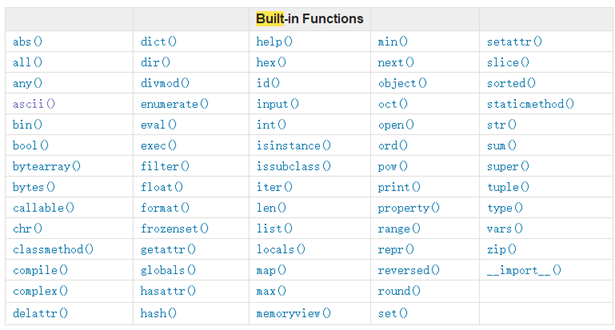本节内容
一、装饰器 Decorator(重点)
本质是函数(装饰其他函数),为其他函数添加附加功能
(1) 原则
- 不能修改被装饰函数的原代码(对被装饰函数来说装饰器是透明的)
- 不能修改被装饰函数的调用方式
(2) 实现
实现方式:高阶函数 + 嵌套函数 –> 装饰器
- 函数即变量:函数名是内存中函数体的引用(内存中引用计数为0时会被Python解释器定期清理)
- 高阶函数:把一个函数名当做实参传给另外一个函数(在不修改被装饰函数原代码的情况下为其添加功能);返回值中包含函数名(不修改被装饰函数的调用方式)
- 嵌套函数:在一个函数中调用一个函数
(3) 示例
1) 示例1
import time
def timmer(func):
def warpper(*args,**kwargs):
start_time=time.time()
func(*args,**kwargs)
stop_time=time.time()
print('the func run time is %s' %(stop_time-start_time))
return warpper #返回wapper内存地址
@timmer #添加在要修饰的函数之前,等同于test1=timmer(test1)
def test1():
time.sleep(3)
print('in the test1')
@timmer #添加在要修饰的函数之前,等同于test2=timmer(test2)
def test2(name):
time.sleep(3)
print('in the test2,%s'%name)
test1()
test2('alisa')
2) 示例2
user,passwd = '01001','abc123'
def auth(auth_type):
print("auth func:",auth_type)
def outer_wrapper(func):
def wrapper(*args, **kwargs):
print("wrapper func args:", *args, **kwargs)
if auth_type == "local":
username = input("Username:").strip()
password = input("Password:").strip()
if user == username and passwd == password:
print("\033[32;1mUser has passed authentication\033[0m")
res = func(*args, **kwargs) # from home
print("---after authenticaion ")
return res
else:
exit("\033[31;1mInvalid username or password\033[0m")
elif auth_type == "ldap":
print("搞毛线ldap,不会。。。。")
return wrapper
return outer_wrapper
def index():
print("welcome to index page")
@auth(auth_type="local") # home = wrapper()
def home():
print("welcome to home page")
return "from home"
@auth(auth_type="ldap")
def bbs():
print("welcome to bbs page")
index()
print(home()) #wrapper()
bbs()
二、迭代器 Iterator
可迭代对象(Iterable):可直接作用于for循环的对象。
- 集合数据类型,如listlist,tuple,dict,set,str等
- generator,包括生成器和带yield的generator function
可以使用
isinstance()判断一个对象是否是Iterable对象。迭代器Iterator:可以被
__next__()函数调用并不断返回下一个值的对象。三、生成器 Generator
(1) 定义
生成器:边循环边计算的机制(只记得当前的一个数据)。
- 只有在调用时才会生成相应的数据(for循环)
- 只记录当前位置,只有一个
__next__()方法
(2) 列表生成式
#列表生成式
print([i*2 for i in range(10)]) #结果[0, 2, 4, 6, 8, 10, 12, 14, 16, 18]
#for循环
a = []
for i in range(10):
a.append(i*2)
print(a)
(3) 生成方式
1) 生成式
#只有被调用的时候才开始计算 c = (i*2 for i in range(1000000)) print(c) #结果 at 0x000002AD30D0DF10>
2) 函数
#斐波那契
def fib(max): #10
n, a, b = 0, 0, 1
while n < max: #n
四、异常处理
抓取程序运行时的异常并进行处理,避免程序直接抛出错误。
(1) 基本使用
while True:
try:
print('运行代码') #要执行的代码
except StopIteration as e: #抓取异常StopIteration
print(e)
break
except Exception as e: #可以抓取所有所有异常
print(e)
finally:
print('无论有没有异常都执行') #无论有没有异常都执行
(2) 自定义异常
class HQError(Exception):
def __init__(self, msg):
self.message = msg
# def __str__(self):
# return 'sdfsf'
try:
raise HQError('数据库连不上') #手动触发异常
except HQError as e:
print(e)
五、内置函数
Python自带了大量的内置函数,不用导入即可使用,如下图所示:

内置参数详解 https://docs.python.org/3/library/functions.html?highlight=built#ascii
#内置函数基本功能介绍
abs() #求绝对值
all() #其中所有元素为真返回True
any() #其中有一个元素为真返回True
ascii() #转成字符串
bin() #转成二进制
bool() #判断是不是布尔值
bytearray() #把二进制字符串转成数组形式
callable() #判断是否可调用
chr(98) #打出ASCII码表中对应项
ord('d') #取元素在ASCII表中位置
compile(code,"err.log",'exec') #编译
exec(code) #执行,code为代码文件
delattr()
dir() #打印可用方法
divmod(5,3) #结果(1,2),商余(除法)
enumerate()
eval() #把数据转换成字符串
res = filter(lambda n:n>5,range(10)) #过滤
for i in res:
print(i)
res = map(lambda n:n*n,range(10)) #处理,res=[lambda i:i*2 for i in range(10)] ,[i*2 for i in range(10)]
for i in res:
print(i)
import functools #化简Python3
res = functools.reduce(lambda x,y:x+y,range(10))
print(res)
frozenset() #生成不可变集合
getattr()
globals() #当前程序所有全部变量(key:value形式)
hash() #转换成数字
help() #帮助
hex() #把数字转换成十六进制
id() #返回内存地址
locals() #返回局部变量
next() #相当于__next__()
oct() #转八进制
ord() #10行
pow(2,8) #2的8次方
repr() #转成字符串
reversed() #反转
round(1.3342,2) #保留两位小数
sorted() #排序
staticmethod()
str()
sum()
super() #class继承__init__()
tuple()
type()
vars(object) #返回对象所有属性名
zip() #拉链
a,b=[1,2,3,4],['a','b','c']
for i in zip(a,b):
print(i)
'''''
(1,'a')
(2,'b')
(3,'c')
'''
六、序列化与反序列化
(1) json
1) 作用与特点
- 不同语言之间进行数据交互
- 只能处理简单的数据类型
2) 示例
#json序列化
import json
def sayhi(name):
print("hello,",name)
info = {
'name':'01001',
'age':22,
#'func':sayhi
}
f = open("test.text","w")
f.write( json.dumps( info) )
info['age'] = 21
f.write( json.dumps( info) ) #json序列化
f.close()
#json反序列化
import json
f = open("test.text","r")
#data = json.loads(f.read()) #data = pickle.loads(f.read())
for line in f:
print(json.loads(line)) #json反序列化
(2) pikle
1) 特点
- 可以序列化Python所有的数据类型
- 只能在Python中使用
七、软件目录结构设计
规范化能更好的控制程序结构,让程序具有如下优点:
- 可读性高
- 可维护性高
具体参考 http://www.cnblogs.com/alex3714/articles/5765046.html
八、程序的解耦
把可能会被其他程序用到的部分拆分开,写成可重复调用的模块:
- 降低用户逻辑层和后台之间紧密程度
- 提升可扩展性(修改后台时应尽量不影响用户部分)
参考:
http://www.cnblogs.com/alex3714/articles/5740985.html
http://www.cnblogs.com/alex3714/articles/5765046.html




 浙公网安备 33010602011771号
浙公网安备 33010602011771号